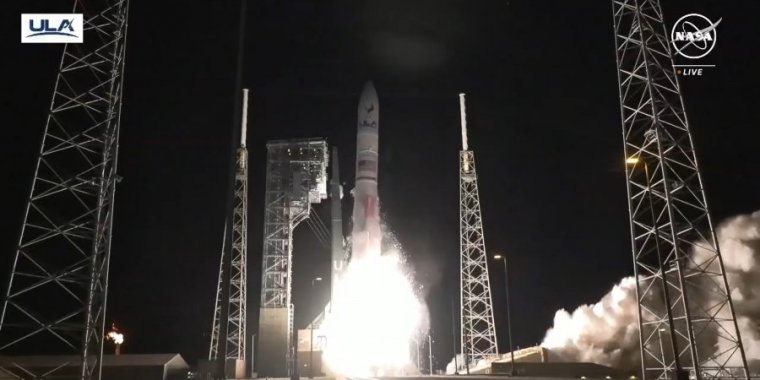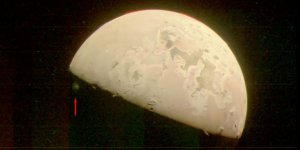| News / Space News |
NASA Science Heads to Moon on First US Private Robotic Artemis Flight
Carrying NASA scientific instruments as part of its Commercial Lunar Payload Services initiative, Astrobotic’s Peregrine lander launched on United Launch Alliance’s (ULA) Vulcan rocket at 2:18 a.m. EST from Launch Complex 41 at Cape Canaveral Space Force Station in Florida. Peregrine has about a 46-day journey to reach the lunar surface.

As part of NASA’s Commercial Lunar Payload Services initiative, Astrobotic’s Peregrine lander launched on United Launch Alliance’s (ULA) Vulcan rocket at 2:18 a.m. EST from Launch Complex 41 at Cape Canaveral Space Force Station in Florida.
Once on the Moon, NASA instruments will study the lunar exosphere, thermal properties of the lunar regolith, hydrogen abundances in the soil at the landing site, and conduct radiation environment monitoring.
The five NASA science and research payloads aboard the lander will help the agency better understand planetary processes and evolution, search for evidence of water and other resources, and support long-term, sustainable human exploration.
“The first CLPS launch has sent payloads on their way to the Moon – a giant leap for humanity as we prepare to return to the lunar surface for the first time in over half a century,” said NASA Administrator Bill Nelson.
“These high-risk missions will not only conduct new science at the Moon, but they are supporting a growing commercial space economy while showing the strength of American technology and innovation. We have so much science to learn through CLPS missions that will help us better understand the evolution of our solar system and shape the future of human exploration for the Artemis Generation.”
For this CLPS flight, NASA research includes:
• Laser Retroreflector Array: A collection of approximately half-inch (1.25 cm.) retro-reflectors – a mirror used for measuring distance – mounted to the lander. This mirror reflects laser light from other orbiting and landing spacecrafts to precisely determine the lander’s position.
• Neutron Spectrometer System: This system will search for indicators of water near the lunar surface by detecting the presence of hydrogen-bearing materials at the landing site as well as determining bulk properties of the regolith there.
• Linear Energy Transfer Spectrometer: This radiation sensor will collect information about the lunar radiation environment and any solar events that might occur during the mission. The instrument relies on flight-proven hardware that flew in space on the Orion spacecraft’s inaugural uncrewed flight in 2014.
• Near InfraRed Volatiles Spectrometer System: This system will measure surface hydration and volatiles. It will also detect certain minerals using spectroscopy while mapping surface temperature and changes at the landing site.
• Peregrine Ion-Trap Mass Spectrometer: This instrument will study the thin layer of gases on the Moon’s surface, called the lunar exosphere, and any gases present after descent and landing and throughout the lunar day to understand the release and movement of volatiles. It was previously developed for ESA’s (European Space Agency) Rosetta mission.
Peregrine is scheduled to land on the Moon on Friday, Feb. 23, and will spend approximately 10 days gathering valuable scientific data studying Earth’s nearest neighbor and helping pave the way for the first woman and first person of color to explore the Moon under Artemis.
YOU MAY ALSO LIKE





